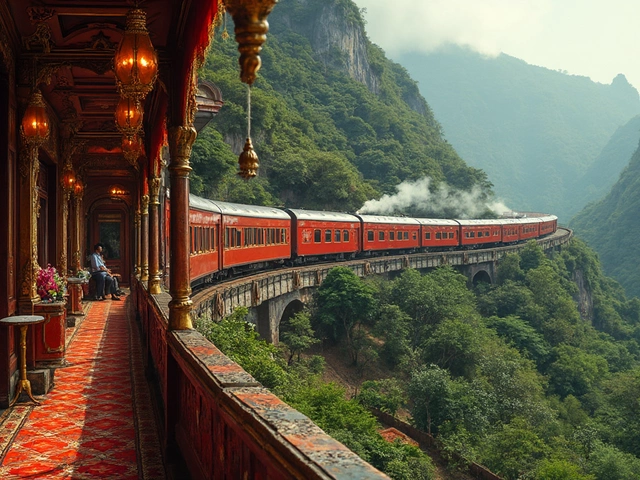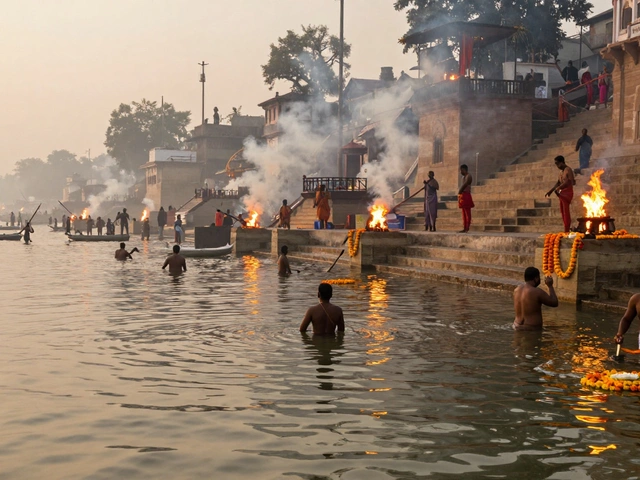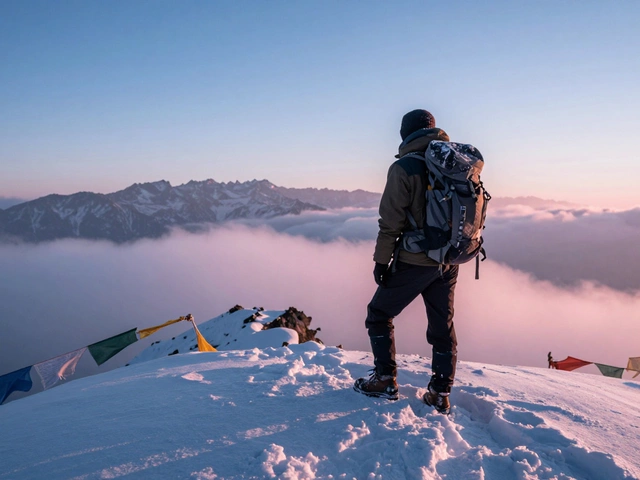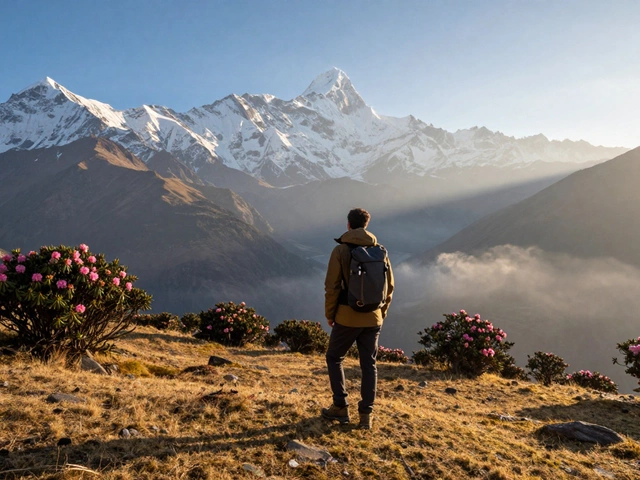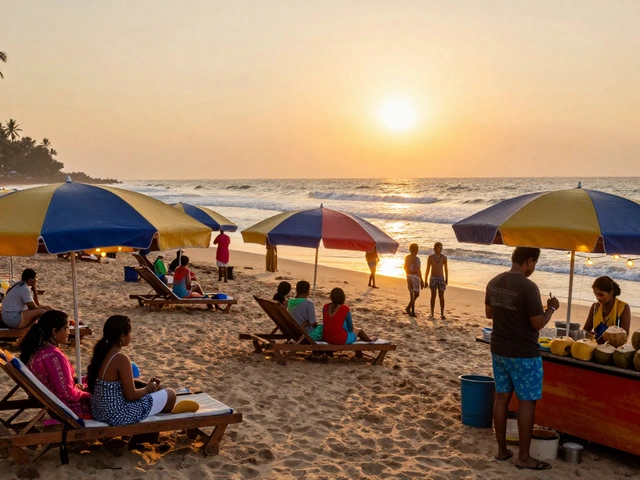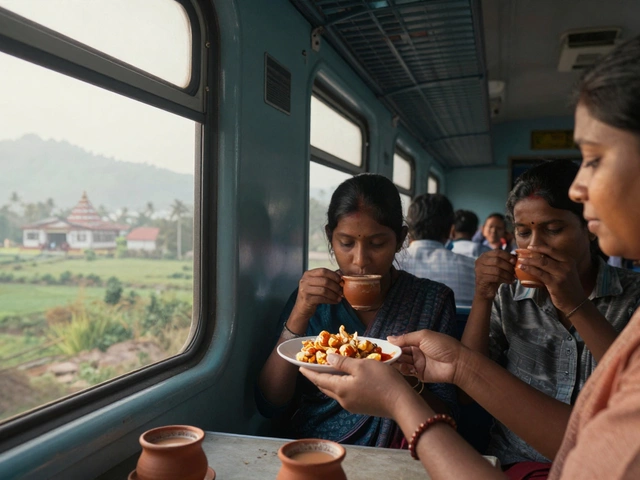You searched this because you want a straight answer, not vague poetry. India is huge and wild, so naming a single winner is risky. But you still need a plan, not a debate. Here’s the honest take: if you’re asking about the prettiest place most likely to blow your mind and be worth planning a whole trip around, my vote goes to the Valley of Flowers National Park in Uttarakhand during peak bloom (late July to late August). It’s high-altitude meadows bursting with color, mist, and glaciers-a real-life screensaver you can walk through. That said, beauty in India shifts with the season. If you hate rain or can’t trek, I’ve got alternatives that still feel like magic.
TL;DR
- Quick pick: Valley of Flowers during peak bloom (late July-late August) is the prettiest place in India for most travelers who can handle a moderate trek.
- No monsoon, no trekking? Choose Ladakh (July-September) for surreal blue lakes and moonscapes.
- Love waterfalls and rainforest? Meghalaya (August-September for thunderous falls; October-April for clear skies).
- Beach-blue paradise? Andaman Islands (November-April) for white sand and coral waters.
- Best winter drama: Thar Desert dunes near Jaisalmer (November-February) for gold-on-gold sunsets.
The short answer and how to choose your kind of beauty
Here’s the promise: you’ll leave with one pick, strong backups, and a simple way to choose based on your mood, month, and comfort with altitude or rain.
My take: After 12 monsoons across the Himalaya, the most “stop and stare” days I’ve had in India were in the Valley of Flowers. I met a shepherd who said, “This place is the meadow where even the sky wants to sit down.” He wasn’t wrong. The meadows are a quilt of blue poppies, brahmakamal, and primulas, with ribbons of glacier melt sparkling through. The beauty isn’t just scenic; it’s alive and changing under your feet.
What makes a place ‘prettiest’?
- Color and texture: flowers, water, rock, snow. You want contrast.
- Drama: big skies, cliffs, dunes, or lakes that look painted.
- Seasonality: bloom, snow, or waterfall timing. Miss the window, miss the magic.
- Access vs. payoff: time and effort needed, especially if you have kids or elders.
- Crowds and vibe: some places are pretty until 2,000 people show up at noon.
- Safety: weather, altitude, monsoon roads. Beauty isn’t fun if you’re stressed.
Step-by-step: pick your version of pretty
- Choose your aesthetic: flowers/meadows (Valley of Flowers, Kashmir), blue lakes/moon desert (Ladakh), rainforest waterfalls (Meghalaya), white-sand sea (Andaman), golden dunes (Jaisalmer).
- Match your month: July-Aug = flowers and waterfalls; Nov-Feb = desert and beaches; July-Sep = Ladakh; Oct-Apr = Meghalaya clear skies.
- Check your limits: okay with 3,000+ m altitude? If not, skip Ladakh/VoF. Hate rain? Choose Ladakh, Andaman, Jaisalmer in their seasons.
- Sketch the route: nearest airport, transfer hours, buffer days. This saves the trip.
- Set a budget: India can be gorgeous at ₹2,500/day or ₹15,000/day. Decide early.
Evidence, not hype
“The Valley of Flowers is renowned for its meadows of endemic alpine flowers and outstanding natural beauty, representing a unique transition zone between the Zanskar and Great Himalaya.” - UNESCO World Heritage Centre (Nanda Devi and Valley of Flowers National Parks)
Bloom timing varies each monsoon. The Indian Meteorological Department (IMD) notes monsoon onset around June with heavy rainfall through August in Uttarakhand; that’s when the valley wakes up. The park usually opens June-October; the richest color is late July-August, weather permitting.
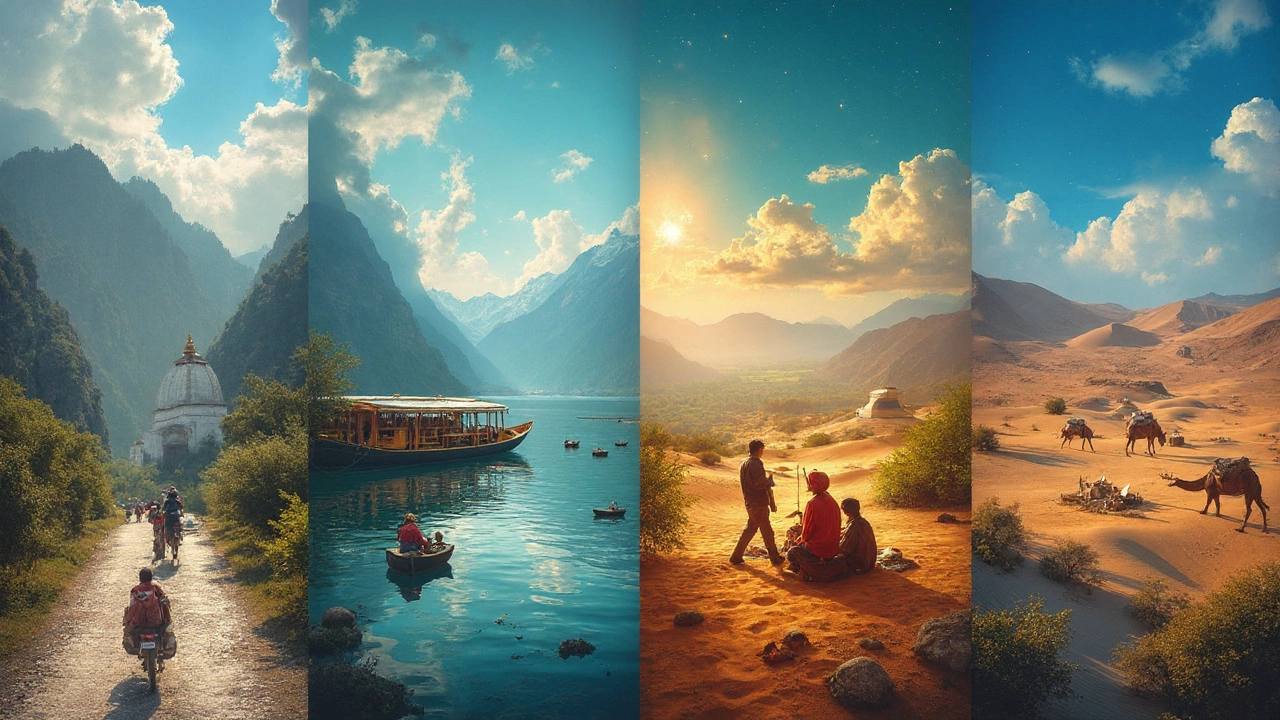
Top contenders: what they look like, best season, what it costs
Below are the spots I recommend when someone asks for the “prettiest place in India” and they give me a month, a vibe, and a budget. I’ve walked these roads, gotten rained out, and gone back again. This list blends beauty and realism.
1) Valley of Flowers, Uttarakhand - high meadows, glaciers, and bloom season magic
Why it feels unreal: You hike through forests into a basin of flowers framed by ice and cloud. The color shifts by week-blue poppies early, then yellows and pinks. Nearby Hemkund Sahib adds a sapphire lake at 4,329 m.
Best months: Late July-late August for peak bloom; September for clearer skies but fewer flowers. Park opens June-October. Expect rain and mist.
Difficulty: Moderate trek: 10 km from Ghangaria into the valley; stone trail, some steep sections. Altitude around 3,250-3,650 m.
Costs: Budget ₹2,500-₹8,000/day depending on stay and porter/guide. Entry permits at the forest check post; carry cash and ID.
Watch-outs: Monsoon landslides can close roads. Build a buffer day. Check Uttarakhand Forest Department advisories.
2) Ladakh (Pangong Tso, Nubra Valley) - blue lakes, moonscape mountains, starry nights
Why it feels unreal: The light is razor-sharp. Pangong shifts from steel to turquoise by the hour. Sand dunes meet snow peaks in Nubra. It’s stark and elegant.
Best months: July-September. Roads typically open, skies stable. Nights are cold even in summer.
Difficulty: High altitude (Leh ~3,500 m). Acclimatize slowly. Avoid flying into Leh and rushing to high passes within 24-48 hours.
Costs: ₹3,500-₹12,000/day. Inner-line permits needed for certain areas; check with the Ladakh administration.
Watch-outs: Acute Mountain Sickness is real. Keep your first two days gentle, hydrate, and sleep low when possible.
3) Meghalaya (Sohra/Cherrapunji, Nongriat, Dawki) - rainforest, living root bridges, thunderous falls
Why it feels unreal: It’s green stacked on green, then a 1,000-foot drop of water. The living root bridges look like something elves built.
Best months: For waterfalls at full power: August-September. For clear river views and easy travel: October-April.
Difficulty: Easy to moderate. Nongriat has steep steps. Humidity is high; carry electrolytes.
Costs: ₹2,500-₹9,000/day. Local guides recommended for root bridge hikes.
Watch-outs: Heavy rain can flood trails and close viewpoints. Check local weather before driving ghat roads.
4) Andaman Islands (Havelock/Swaraj Dweep, Neil) - white sand, clear coral waters, slow days
Why it feels unreal: Radhanagar Beach at sunset is gold velvet. Water visibility makes snorkeling feel like flying.
Best months: November-April for calm seas and sunshine. Monsoon can disrupt ferries.
Difficulty: Easy. Island hops via ferries; pre-book in season.
Costs: ₹4,000-₹15,000/day depending on dive/snorkel and stay.
Watch-outs: Limited last-minute rooms in peak months. Respect marine life; avoid touching coral.
5) Kashmir (Gulmarg, Pahalgam, Dal Lake) - lakes, meadows, chinar trees in fall
Why it feels unreal: Shikara rides at dawn, meadows that feel like a painting, and autumn foliage that glows copper.
Best months: April-June for blooms; September-October for fall colors; January-March for snow.
Difficulty: Easy. Day trips from Srinagar; cable car in Gulmarg.
Costs: ₹3,000-₹10,000/day.
Watch-outs: Check local advisories before travel; weather can change fast.
6) Thar Desert (Jaisalmer) - dunes, star fields, and silence
Why it feels unreal: Honey-colored fort by day; camel shadows and galaxy skies by night.
Best months: November-February. Pleasant days, cold nights.
Difficulty: Easy. Safari options from soft to full overnight camps.
Costs: ₹2,500-₹9,000/day; sunset dune trips from budget to luxury.
Watch-outs: Avoid peak midday; carry layers for night.
| Destination | Region | Peak Months | Altitude/Sea Level | Access Notes | Transfer Time from Nearest Airport | Typical Daily Budget (₹) | Difficulty |
|---|---|---|---|---|---|---|---|
| Valley of Flowers | Uttarakhand | Late Jul-Aug | 3,250-3,650 m | Fly Dehradun; road to Govindghat; trek via Ghangaria | Dehradun-Govindghat 10-12h by road; then 1-2 days trek | 2,500-8,000 | Moderate trek |
| Ladakh (Pangong/Nubra) | J&K (Ladakh) | Jul-Sep | 3,000-5,600 m | Fly to Leh; permits for border areas | Leh town 15-30 min; 4-6h to lakes/valleys | 3,500-12,000 | High-altitude, acclimatize |
| Meghalaya (Sohra/Dawki) | North East | Aug-Sep (falls); Oct-Apr (clear) | 300-1,500 m | Fly Guwahati or Shillong; hilly roads | Guwahati-Shillong 3h; Shillong-Sohra 2h | 2,500-9,000 | Easy-Moderate |
| Andaman (Havelock/Neil) | Bay of Bengal | Nov-Apr | Sea level | Fly Port Blair; ferry to islands | Port Blair-Havelock 1.5-2.5h ferry | 4,000-15,000 | Easy |
| Kashmir (Gulmarg/Pahalgam) | J&K | Apr-Jun; Sep-Oct; Jan-Mar | 1,600-2,700 m | Fly Srinagar; day trips | Srinagar-Gulmarg ~2h; Srinagar-Pahalgam ~2.5h | 3,000-10,000 | Easy |
| Thar Desert (Jaisalmer) | Rajasthan | Nov-Feb | 200-300 m | Fly Jaisalmer/Jodhpur; desert safaris | Airport-Jaisalmer 20-30 min; dunes 30-90 min | 2,500-9,000 | Easy |
Why I rank Valley of Flowers first
- Peak spectacle per day used: One well-timed week equals daily wow.
- Nature-first experience: You walk inside the landscape, not just to a viewpoint.
- Rare biodiversity: Hundreds of alpine species; UNESCO status for a reason.
- Logistics you can manage: Long road, yes-but no permits like Ladakh’s inner-line zones, and altitude is manageable if you pace it.
When I would not pick Valley of Flowers
- If your dates are outside June-October.
- If you can’t trek 10 km at altitude.
- If monsoon travel stress will ruin your mood. In that case, go Ladakh (July-September) or Andaman (November-April).
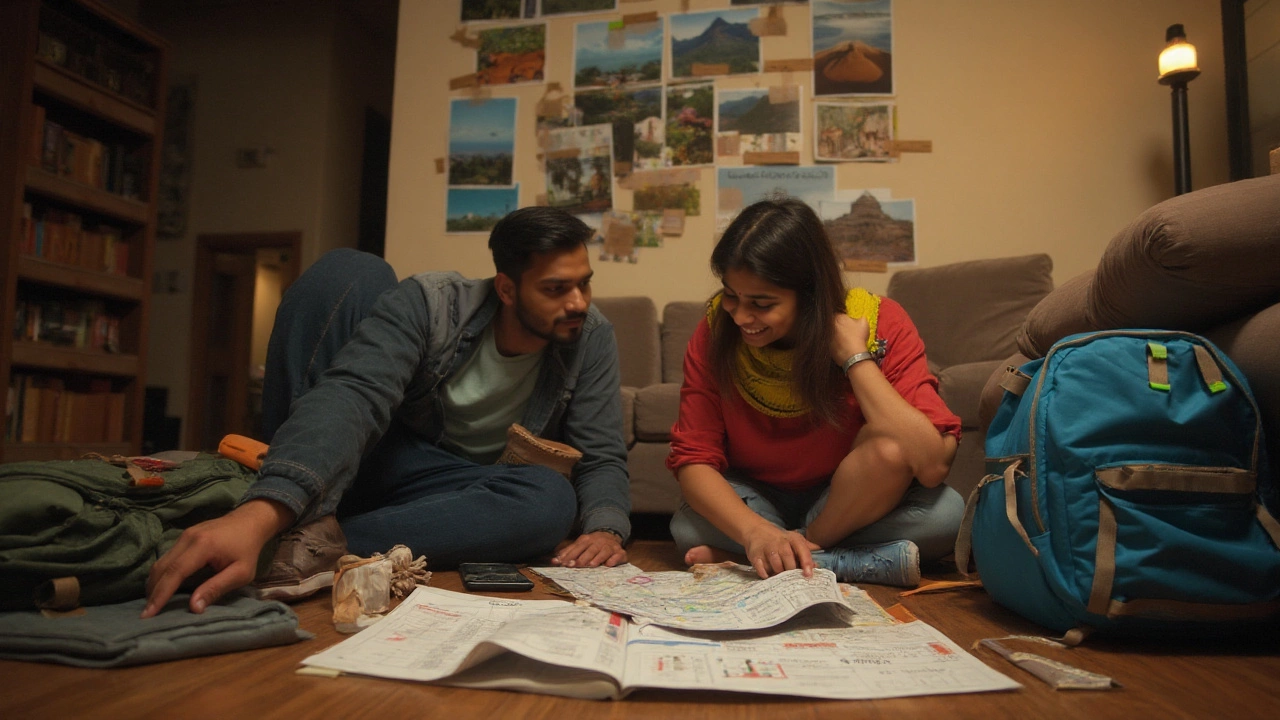
Itineraries, checklists, and answers to real questions
You came for a clear plan. Here are realistic routes, quick gear lists, costs, and the answers I get asked most.
5-day Valley of Flowers plan (peak bloom window)
- Day 1: Fly to Dehradun. Drive to Joshimath/Govindghat (buffer for landslides). Sleep early.
- Day 2: Trek Govindghat to Ghangaria (9-10 km). Slow and steady. Early dinner.
- Day 3: Valley of Flowers day hike (10 km in/out). Start at sunrise. Rain layers, snacks, ID.
- Day 4: Optional Hemkund Sahib (steep, 6 km one way) for alpine lake and brahmakamal. Or second Valley day to catch different blooms.
- Day 5: Trek back to Govindghat. Drive to Rishikesh/Dehradun. Keep a weather buffer if you have a flight.
Permits: Park entry at the forest gate near Ghangaria; carry ID and cash. Check timings-gates usually close mid-afternoon.
Altitude: Most travelers feel fine with a gentle pace. If you get a headache, slow down, hydrate, and skip Hemkund.
6-7 day Ladakh plan (acclimatization-friendly)
- Day 1: Arrive Leh. Hotel rest, short market stroll only.
- Day 2: Leh local: monasteries within short drives (Thiksey, Shey). Early night.
- Day 3: Nubra Valley via Khardung La. Stay low in the valley overnight.
- Day 4: Nubra explorations (Hunder dunes, Turtuk if open). Return via varied route if possible.
- Day 5: Pangong Tso (permit check). Lakeside stay.
- Day 6: Back to Leh. Souvenirs, cafés, rest.
- Day 7: Buffer or Tso Moriri if weather and time allow.
Health: If you feel unwell at altitude, don’t push. Descend to sleep lower.
4-day Meghalaya plan (waterfalls high or clear-river low)
- Day 1: Guwahati to Shillong. Ward’s Lake, cafés, acclimate to rain or sun.
- Day 2: Sohra/Cherrapunji waterfalls circuit (Nohkalikai, Seven Sisters). Watch for road closures in heavy rain.
- Day 3: Nongriat root bridges hike. Homestay if you want the vibe.
- Day 4: Dawki for clear-water boating (Oct-Apr best). Return to Guwahati.
Quick gear checklist by destination
- Valley of Flowers: rain jacket, waterproof shoes, trekking poles, quick-dry layers, ID, cash, snacks, small med kit.
- Ladakh: sunblock, lip balm, hat, warm layers, refillable bottle, basic AMS meds if prescribed, permits.
- Meghalaya: poncho, anti-slip footwear, dry bags for electronics, electrolytes, flashlight.
- Andaman: reef-safe sunscreen, mask/snorkel if you prefer your own, dry bag, light cover-ups.
- Jaisalmer: scarf for sun/sand, warm night layer, reusable water bottle.
Cost planner (2025 ranges)
- Budget stays: ₹1,000-₹3,000/night in most hubs; Andaman and Ladakh on the higher side.
- Mid-range: ₹3,500-₹7,000/night.
- Transport: shared jeeps/buses cheapest; private cabs ₹3,500-₹6,500/day in hills; Andaman ferries vary by operator.
- Guides/permits: Valley of Flowers park fees modest; Meghalaya guides ₹1,000-₹2,500/day typical; Ladakh permits via tour desks.
Safety and ethics
- Monsoon common sense: start early, cross known slide zones before noon, never argue with a closed road. IMD advisories help you decide if you wait or move.
- Altitude rules: if you have headache + nausea + poor sleep in Ladakh, rest or descend. Beauty waits; your body calls the shots.
- Leave No Trace: carry your trash, skip flowers picking in VoF, no drones in sensitive zones without permits.
- Solo women: pick guesthouses with lots of recent reviews, share cab details with someone you trust, avoid remote night drives.
Pitfalls to avoid
- Booking the Valley too early in June-they’ll be green, not floral.
- Flying into Leh and driving to Pangong the same day-hello altitude issues.
- Going to Meghalaya in peak rain without flexible days-waterfalls win, but roads can lose.
- Andaman in late May-September if ferries cancel easily-build buffers.
Mini-FAQ
- Is Valley of Flowers safe in monsoon? Safer with sense. Roads may close after heavy rain. Start early, track weather, keep a buffer day. Local police and forest staff issue notices-listen to them.
- Do I need a guide for Valley of Flowers? Not mandatory on the main trail, but a local guide helps you pace, spot blooms, and handle permits.
- How bad is altitude in Valley of Flowers vs. Ladakh? VoF is lower (around 3,500 m) and usually gentler. Ladakh starts high; give yourself two easy days.
- Can I do Ladakh in July with kids? Yes, if you acclimatize slowly, keep days short, and carry layers. Avoid very high passes on day one.
- Is Kashmir safe to visit right now? Tourists travel year-round. Check local advisories and choose central, reputable stays. Avoid late-night remote drives.
- Can I fly a drone at Pangong or Valley of Flowers? Assume no without explicit permits. Protected and border areas are usually off-limits.
Scenarios and next steps
- I want flowers and can trek a bit: Book Valley of Flowers for late July-August. Add a buffer day for weather. Lock a simple room in Ghangaria.
- I hate rain: July-September: Ladakh. November-February: Jaisalmer dunes. November-April: Andaman.
- I have only 4 days from Delhi: Kashmir or Jaisalmer beats VoF/Ladakh. Less transit, more “pretty time.”
- We’re a mixed-age family: Kashmir, Andaman, or Meghalaya in clear season. Pick short drives and day trips.
- I want the best photos without crowds: Be at the spot at sunrise, not 11 a.m. Weekdays beat weekends. In Meghalaya, light pops after rain passes.
Credibility notes
- UNESCO recognizes the Nanda Devi and Valley of Flowers National Parks for biodiversity and scenic value.
- IMD seasonal patterns: monsoon in Uttarakhand typically June-September; Ladakh’s dry window July-September.
- Local administrations (Uttarakhand Forest Dept., Ladakh authorities) issue real-time advisories on permits and closures-check right before you go.
Beauty is personal, but timing isn’t. If your dates line up with bloom or clear skies, the place will meet you halfway. If they don’t, pick the spot that’s peaking when you can travel. That’s how you win this game.
Quick decision map (in words)
- Traveling in July-August and okay with rain + trekking? Valley of Flowers.
- July-September, want dry skies and big drama? Ladakh.
- August-September, waterfalls at full roar? Meghalaya.
- November-April, crave blue water? Andaman.
- November-February, golden sunsets and starry nights? Jaisalmer.
If you still can’t choose, pick your element-flowers, water, stone, or sand-and let the season decide the rest. India has a way of rewarding that kind of honesty.

